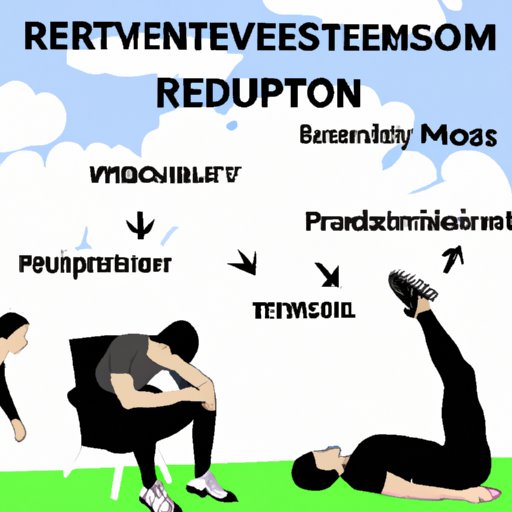Introduction
A recovery period is a time allocated to allow the body to rest and recover after a bout of physical exercise. It is an important part of any fitness routine, allowing the body to repair itself, rebuild muscle, and restore energy levels. In this article, we will explore why recovery periods are important, the physiological benefits they offer, the proper nutrition needed during recovery, restorative activities that can reduce soreness and speed up recovery times, psychological advantages of rest periods, and potential risks of overtraining.

Physiological Benefits of Recovery Periods
One of the most important benefits of recovery periods is increased muscle growth. During a workout, tiny tears are created in the muscle fibers, which need to be repaired in order for the muscles to grow in size and strength. A recovery period gives the body the time it needs to repair the muscle fibers and build new ones. Without a recovery period, the body does not have enough time to repair the muscle fibers, leading to decreased gains in muscle mass.
Recovery periods also help improve performance. During a recovery period, the body replenishes its energy stores, allowing it to perform at a higher level when exercise is resumed. Without sufficient rest, the body’s energy stores become depleted, resulting in fatigue and poor performance.

Proper Nutrition During Recovery Period
Proper nutrition is also essential for recovery. Nutrients such as protein, carbohydrates, vitamins, and minerals are necessary for the body to repair itself and rebuild muscle. Eating a balanced diet with plenty of fruits, vegetables, lean proteins, and whole grains provides the body with the nutrients it needs to recover from exercise.
In addition to eating a balanced diet, athletes may benefit from consuming certain foods that are specifically beneficial for recovery. These include foods high in omega-3 fatty acids, such as salmon, walnuts, and flaxseed; foods high in antioxidants, such as blueberries and kale; and foods high in electrolytes, such as bananas and coconut water.
Restorative Activities to Reduce Soreness and Speed Up Recovery Times
In addition to proper nutrition, there are several restorative activities that can be utilized to reduce soreness and speed up recovery times. These include stretching, massage, and foam rolling. Stretching helps loosen tight muscles and increase flexibility. Massage helps to improve circulation, reduce inflammation, and decrease muscle tension. Foam rolling helps to release knots and tension in muscles, improving mobility and reducing soreness.

Psychological Advantages of Rest Periods
Rest periods also offer psychological benefits. Taking time off to rest and relax helps to clear the mind and improve focus. Regular rest periods can also reduce stress levels and help prevent burnout. Allowing the body to rest and recover can help to boost morale and motivation, making it easier to stay on track with a fitness routine.
Potential Risks of Overtraining
It is important to note that too much exercise without adequate rest can lead to overtraining. Overtraining can cause fatigue, injury, and burnout. It can also lead to a decrease in performance and an increase in risk of illness. For this reason, it is important to prioritize rest and recovery in order to maintain optimal health and performance.
Conclusion
In conclusion, recovery periods between bouts of exercise are essential for optimal performance and health. They allow the body to repair itself, rebuild muscle, and replenish energy stores. Proper nutrition and restorative activities can also help to reduce soreness and speed up recovery times. Finally, rest periods offer psychological benefits by helping to reduce stress levels and improve focus. By taking the time to prioritize rest and recovery, athletes can ensure that their bodies are adequately prepared for the next bout of exercise.


